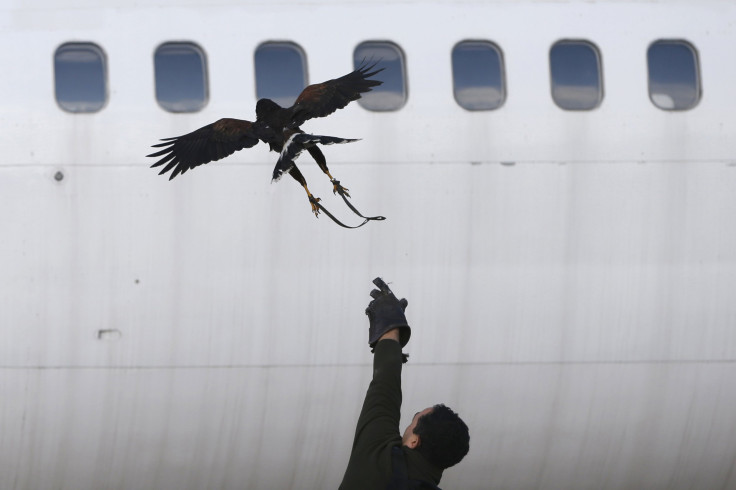NATO Turns To Birds Of Prey To Help Warplanes Police Baltic Airspace Amid Rising Tensions With Russia

NATO has forged an unusual alliance, which will allow predatory birds to fly over the disputed Baltic airspace, to ensure that runways are clear for its warplanes. The latest move is expected to help NATO ensure the safety of pilots and their jets during its Baltic air policing mission amid growing tensions with Russia, the Agence France-Presse (AFP) reported.
As part of the new move, four birds of prey, including three falcons and an eagle, would fly over the runway near four massive hangars at the Zokniai air force base in northwest Lithuania. The birds and falconer, brought to Zokniai by the Polish air force, are expected to keep airstrips clear of other birds and wildlife to avoid potential collisions during takeoff and landing.
“All artificial methods work only for a short time because birds get used to them, but they're always mindful of predators,” Mariusz Chroscinski, a Polish falconer, told the AFP.
After sending the birds of prey to fly above the airbase, Chroscinski walks up and down the runways with a hunting dog to ensure that the wild birds are keeping their distance from the jets preparing to take off. Officials at the Lithuanian base have signed Chroscinski for the summer as wild birds are more active in the area during the period.
One falcon costs up to 1,000 euros ($1,080), which compares favorably with the cost of fuel as fighter jets normally burn up to 15 liters each second, the AFP reported.
“Even the smallest of birds can be swallowed up by a jet engine and completely destroy an aircraft,” Janusz Szczypior, a Polish air force captain deployed in Zokniai, told the agency.
In 2014, NATO warplanes took off from the Zokniai air force base 150 times, often scrambled to monitor Russian jets.
In March, as many as seven Russian aircraft were intercepted by the NATO Baltic air policing mission while flying in international airspace near Latvia. Typhoon fighter jets from the Spanish and Italian air forces were scrambled to intercept the Russian planes, which included four Su-27 fighters, two An-26 planes and one An-12 transport jet.
A similar incident occurred in less than a week when four Russian military aircraft flying in international airspace over the Baltic Sea were intercepted by Swedish Gripen jets.
In February, the Latvian Army announced that NATO’s Typhoon fighter jets were scrambled to intercept a Russian maritime patrol aircraft over the Baltic Sea.
© Copyright IBTimes 2025. All rights reserved.






















